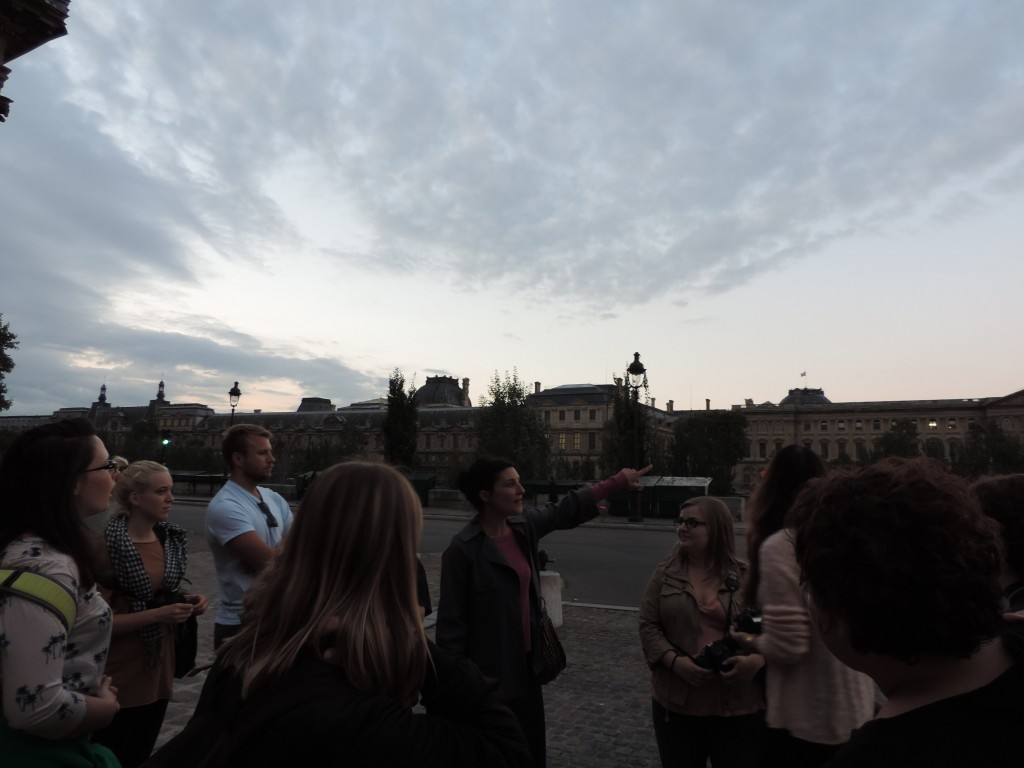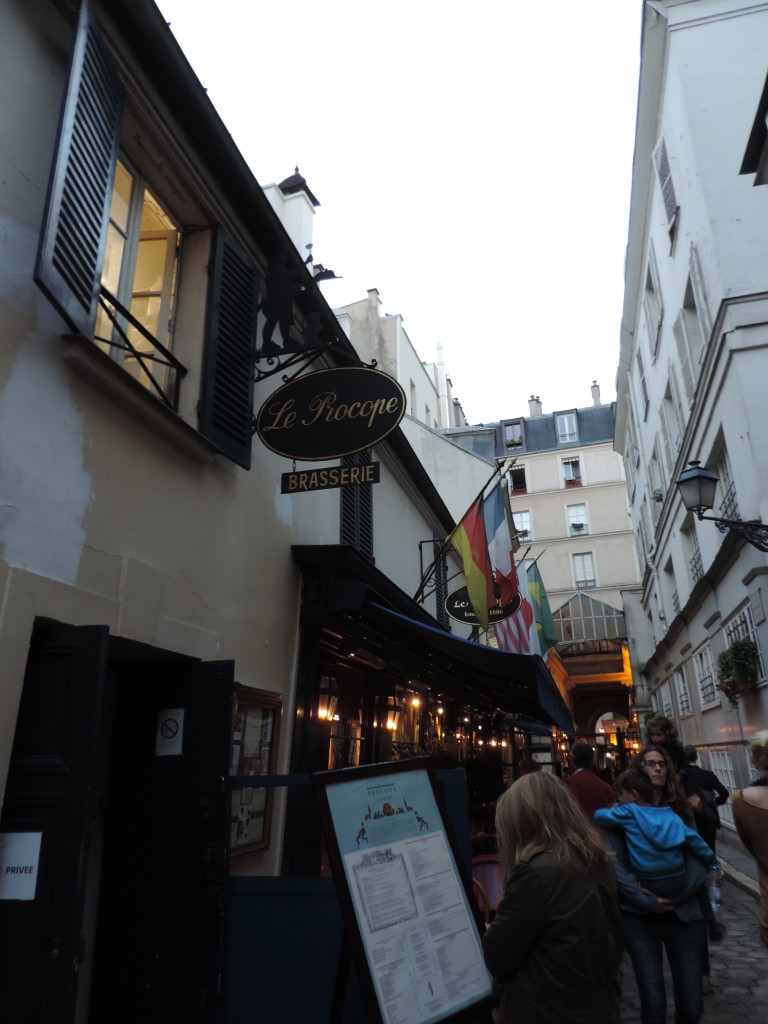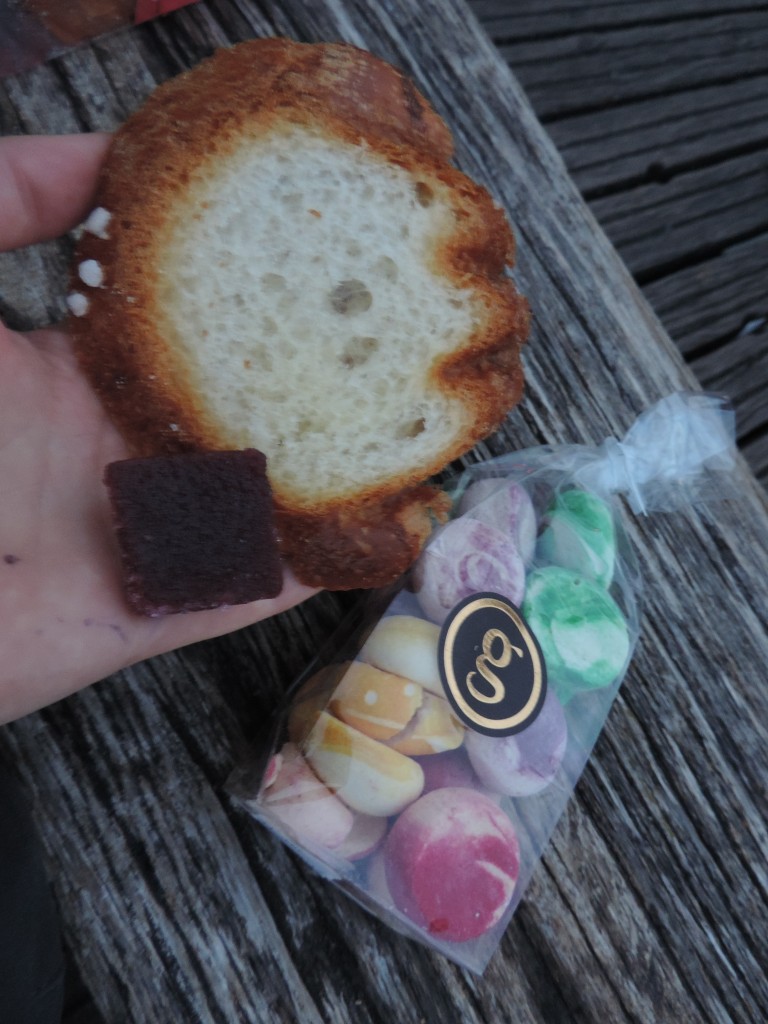In order to truly understand the history and culture of France, it’s necessary to learn a thing or two about the Révolution Française. The students at CEA Paris had the chance to learn about this key turning point in French history on a Balade Composée! (a walking tour composed of different stops in the city). Our tour guide led us through the historical streets of Paris, where one can still catch a glimpse into the past and see remnants of the French Revolution.
 |
| Students listened as we learned about Olympes de Gouges, a French political activist of the French Revolution. |
We began our balade at the Eglise St. Germain des Prés, a church in Paris whose bell tower is the oldest in the city (it’s over a thousand years old!). The French Revolution found its beginning here, when in 1789, Louis the 16th, king of France, proposed a vote on taxes…because France was in debt. The people were furious, because as a group they were only allowed one vote, even though the people of France accounted for 90% of the population at the time. They were outraged and their first action against the king and the monarchy was their storming of the Bastille on July 14th, 1789 (also known as Bastille day!).
As we made our way through the streets of Paris, we walked down a petite rue and stopped to admire a plaque. Our guide informed us that it was dedicated to a woman named Olympes de Gouges. She was a political activist, feminist, and playwright, who played a key role in advocating for the rights of women during the French Revolution and also wrote the Declaration of the Rights of Woman and the Female Citizen.
Soon we arrived at the Jardins du Luxembourg, where we learned that at the time of the revolution, the Luxembourg palace was transformed into a prison and the garden was abandoned… The students were surprised, considering how gorgeous the gardens are at present.
 |
| The oldest cafe in Paris where great minds like Robespierre and Danton came to share ideas. |
Our next stop was Théatre de l’Odéon, a theater where the play Le Mariage de Figaro was shown for the first time, with Marie Antoinette as the Countess…Quel scandal! Our guide informed us that this play was written by Pierre-Augustin Caron de Beaumarchais, a man who was a supporter of the American Revolution and helped further the cause of the French Revolution.
Down a small, but very cute side street called Cour du Commerce, we stopped in front of Café Procope, the oldest café in Paris (it was the first place in the city where you could buy a cup of coffee). Famous men like Robespierre, Danton, and even Benjamin Franklin came here to share ideas with other thinkers and revolutionaries.
 |
| Our yummy French snacks at the end of the Balade. |
Our tour ended on the Pont des Arts (yes, the famous love lock bridge that is no more because of its harm to the bridge structure and the water quality of the Seine). To wrap up our balade, our guide recounted the untimely demise of King Louis XVI and his wife Queen Marie Antoinette. Unfortunately, they were symbols of the monarchy and must not be allowed to live if the revolution was to succeed.
On that lovely note, we ended our balade with some French snacks (meringues, pâtes de fruits, and brioche) and left time for students to absorb everything they had just learned about the revolution. As we learned on this balade, French history is intricate and complicated, but the history is what created the culture and people of France today, and that is something I think we can all appreciate.
Karisa D. is the CEA Paris On-Site Ambassador. She is a CEA alumna from the Fall 2014 semester in Paris, and a recent graduate of Champlain University.







